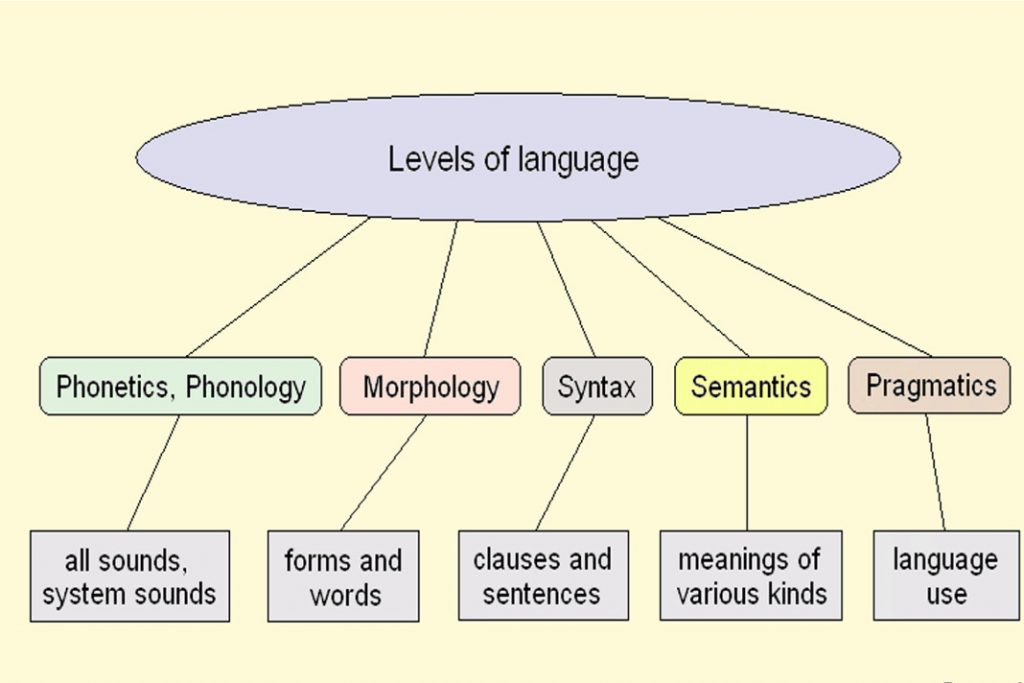Human language is considered as one of the best means of communication. All around the world, it is the language by which people are differentiated. A variety of language can be seen in India itself apart from English, French, Japanese, etc. Ever wondered where this evolution of language occurred? Well, the hierarchical structure of human language is said to be an evolution from the combination of two pre-existing systems—Type E(xpression) and Type L(exical).
The first type, i.e., E is mostly found from the humming of the birds. Birds sing songs to mark territory, to express their feelings, to warn about any climatic change, etc. Such a form of expression is now seen in case of human language (facial expression and hand gestures). The second type, i.e., L is a combination of calls where non-human creatures participate in interacting. It is more like an argument, debate, or interpersonal communication which is mostly seen in a human. So a combination of Type E and L (i.e., expression and words) together form the basis of the evolution of human language.

An overview of human language evolution:
Human language evolved over the past 100,000 years and shows significant development for the last 50,000- 80,000 years. Earlier human beings used to communicate via sign languages, but with the emergence of human language, a new way, was paved for communication. Initially it was not in the finite state of grammar. Human language syntax had a lot of ambiguity before developing to its current state. In the finite state, human language is said to be syntactic monoids, i.e., they should be associated and cannot refer to two different representations at the same time. It requires the compositional operator to take two lexical or two syntactic objects and combine them to form a complete finite sentence.
Levels of Language Hierarchy:
- Phonology:
It means sound wherein the spoken language is in the form of distinct sound like the birdsongs.
- Morphology:
Morphology comprises of morpheme, i.e., small meaningful words which constitute together to form a sentence.
- Lexical:
Lexical is individual words which come together to form the lexical structure along with tense, noun, and preposition and form complete human language syntax.
- Syntax:
Syntax refers to the process in which lexical or words are arranged one after another to form a proper sentence.
- Semantics:
Semantics means that more is yet to come. It refers to sentences which lead to another group of sentences.
- Pragmatics:
These are the behavioral constraints which determine the accurate choice of words and the interpretation of it from the vocal and facial expression.
The two-layer meaning of human language:
Every human language comprises two layers of meaning. For example, Neha will eat a burger is a simple sentence whose core lexical meaning consists of three words Neha, eat, and burger. Next is the tense. It can be Neha may eat burger or Neha will eat burger depending on the meaning a person wishes to portray. So starting from the lexical structure, tense, and question-formation output puts together forms an expression of desire that forms complete sentence used in a conversation.
Lexical structure of language in animals:
In case of non-human creatures like monkey, apes, honeybee, etc. communication is done mainly through the lexical structure with the utterance of some code words. It is seen that animals often use some sort of noise or words to signal any alarm or indicate the nearing of a prey. Studies are now being conducted to find out whether these animals like monkeys and apes possess the ability to construct objects from an abstract event.
Birdsongs and relation to human expression:
Unlike animals, birds are seen conversing in musical tunes which forms beautiful expression. According to earlier studies links have been found between bird songs and human language, however, even after many similarities in expression birdsong lacks the essence of human sense. In case of birdsongs, though it is expressive like human language it manages the hierarchy of human language. That is why birdsongs are often referred as phonological syntax which emphasizes the lack of lexicon.
Besides bird songs is also devoid of recursion much like human language. So the link between birdsong and human language is not just between song and language entirely rather it is the similarity of expression which is seen in birdsong and human conversation. Human syntax consists of words and word components without which it would be difficult to recognize it especially in the initial years of vocal learning.
Labeling:
An interesting aspect of human language is labeling. A single word forms the label for the larger phrase in the sentence. For example, John eats the mangoes, eat is the verb which compliments to label the larger phrase the mangoes. This ability of labeling aids human language to form the hierarchical structures. Human language syntax solely consists of noun, verb, and prepositions and has the property of discrete infinity. It is seen that labeling phenomenon occurs only in human communication as it contains words as well as a form of expression in a conversational tone.
So to conclude, it is seen that type E and L are both linked with human language. This link is described in two ways—firstly by shared human intentionality and secondly as was seen by Darwin that human language emerged from birdsongs, which were then transformed into words. Therefore, it can be said that E and L together formed the base of the emergence of human language.
Image Credit: uni-due.de
